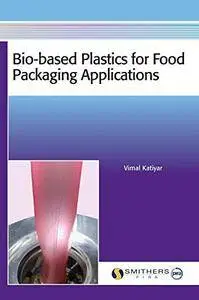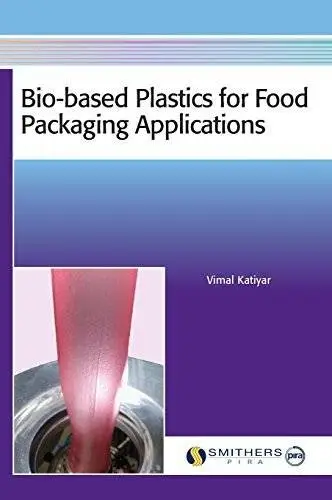Bio-based Plastics for Food Packaging Applications by Vimal Katiyar
2017 | ISBN: 1910242586, 191108836X | English | 298 pages | PDF | 16 MB
2017 | ISBN: 1910242586, 191108836X | English | 298 pages | PDF | 16 MB
This book discusses the development of bio-based plastics and associated nanocomposites in order to achieve targeted structural morphologies, and physical and chemical properties for use in food-packaging applications. In line with bio-based and/or biodegradable plastic matrices, the current status of the development of multifaceted bionanofillers is also explored in detail.
This book begins by addressing the past, present and future prospects of bio-based and/or biodegradable polymers in specific food-packaging applications, and the importance and advantages of such packaging over fossil polymer-based packaging materials. Furthermore, this book also examines the current commercial overview of bio-based and/or biodegradable polymers and nanocomposites, and the structure–property relationship required for various advanced applications.
Individual chapters detail bio-based polymers, bio-derived and microbial-derived plastics, which include exclusive investigations on the most promising polymers, such as polylactic acid (PLA) and polyhydroxyalkanoates (PHA), and their bionanocomposites, for food-packaging applications. Detailed discussions highlight the various properties of polymers for food-packaging applications including bio-based and/or biodegradable polymers and nanocomposites. The processing of blends using bio-based and/or biodegradable polymers and non-degradable polymers for food-packaging applications are also featured.
In addition, extensive discussions include different edible biopolymer-based coatings on food items which can act as effective carriers for improving the shelf life of food. Moreover, various end-of-life solutions of plastics such as recycling, reuse, composting and so on, for the safe disposal of plastic waste are reviewed. Finally, this book discusses migration studies, and safety legislation and regulations of such packages in contact with food, which are currently being performed by various organisations across the world. Throughout the book, detailed case studies are included on sustainable polymers, and associated nanocomposites, along with different perspectives on their industrial applications, and critical challenges and opportunities for developing biopolymer nanocomposites for food-packaging applications.



